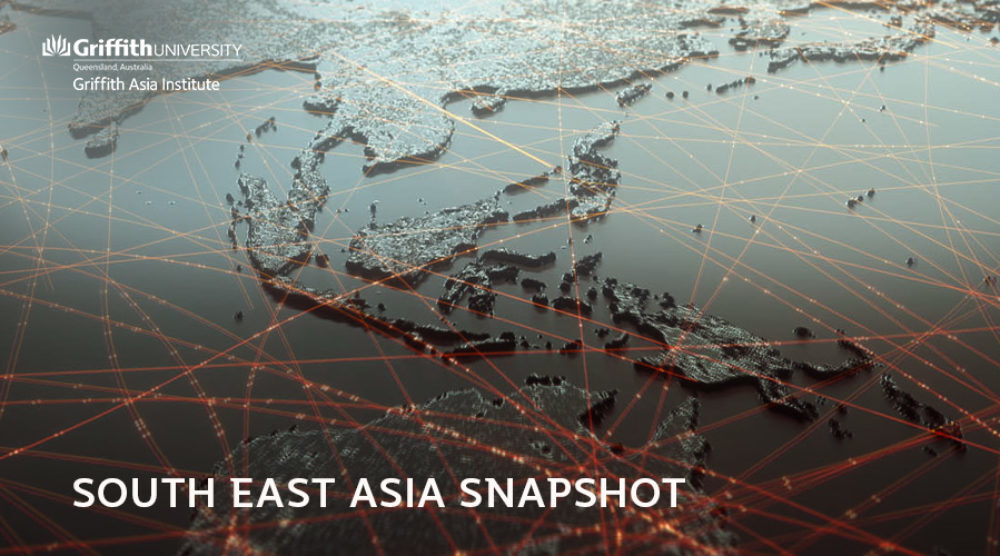The Outcome of the 2022 ASEAN Summit
The Association of Southeast Asian Nations (ASEAN) conducted its 40th and 41st ASEAN Summit – and related meetings – from 11-13 November in Phnom Penh, Cambodia. This Snapshot discusses the outcomes of the summits and the significant regional challenges captured in discussions.
After a decade of campaigning to become the bloc’s newest member, ASEAN has finally agreed in principle to admit Timor-Leste (East Timor) as the 11th member of the organization. Timor-Leste will be granted the observer title in ASEAN’s high-level meeting until full membership is achieved. The ASEAN Coordinating Council will formalize the objective criteria-based roadmap for the country’s full membership which Timor-Leste would have to meet to acquire full membership.
Despite that, East Timor’s President Jose Ramos-Horta welcomed the decision, citing that it would open up his country of 1.3 million people to the wider economic market, stronger diplomatic network, along with the investment, travel, and multilateral exchange central to ASEAN. Given these benefits, the country would need to work hard to meet the requirements and work capacity of ASEAN. Timor-Leste had hoped that full membership would finally be granted in 2023 during Indonesia’s chairmanship of ASEAN but many do recognize that there are significant challenges for the country in the years ahead. Nonetheless, the announcement has been viewed positively in that both ASEAN and Timor-Leste will benefit from the membership.
Tensions were evident during discussions on the issues in Myanmar. The escalation of the crisis has pushed ASEAN leaders to demand full implementation of the 5-point consensus. At the Summit, the junta ruler was not permitted to the meeting given his failure to comply with the agreed-peace plan. This move from ASEAN was designed as a warning for the junta to inspire progress on the five-point consensus. The bloc’s leaders also agreed on the need for more practical, feasible, and measurable indicators with a clear timeline for resolving the conflict. Furthermore, the bloc’s leaders agreed to review Myanmar’s representation in all ASEAN meetings, not just the high-level meeting as agreed last year. This could be seen as ASEAN’s response to the junta’s increasing aggression with the recent executions of democratic activists and an airstrike that killed more than 80 people.
The Indonesian President proposed to ban the junta from all the ASEAN meetings, not just the high-level summits. The Singaporean Prime Minister agreed with Indonesia and also suggested the bloc to take further serious steps in sending clear messages to the junta’s authority, pointing out the little progress to the agreed-peace plan. ASEAN released a statement urging for the de-escalation of tension and called for the UN and external partners to support its peace efforts. The bloc reaffirmed that Myanmar is still an important part of the bloc, but recognized that the violence is affecting both the country and ASEAN. These suggestions were rejected by the junta with a warning that further pressure will lead to a more complicated outcome.
The South China Sea issue was on the agenda of the summit; however, it was not the top issue in the discussion this year. Reports suggested that the meeting made no progress on the South China Sea issue. Leaders of the bloc repeatedly expressed the need for a code of conduct while ASEAN reaffirmed its stance firmly on following UNCLOS and international law. Notably, ASEAN chose not to engage on the issues surrounding Taiwan.
Regarding the conflict between Russia and Ukraine, different positions were presented by the attendees in meetings where the respect for state sovereignty and territorial independence and integrity were stressed by the ASEAN Chair. ASEAN and Ukraine had signed the Treaty of Amity and Cooperation in Southeast Asia (TAC) with the agreement seen as a way to strengthen ties and as an effort by Kyiv’s to gain support from the international community. However, the bloc’s leaders did not allow the Ukrainian President to make a video statement during the summit, and Russia and Ukraine had chosen not to engage in any talks.
ASEAN also used the summits to convene several bilateral meetings. During the US-ASEAN Summit, the United State said it was committed to promoting peace and prosperity in the region while focusing on issues such as climate change, human rights, health, green energy, and economic challenges. During the China-ASEAN Summit, China called for the enhancement of cooperation to maintain stability and peace in the region while also strengthening their comprehensive partnership to create a special development loan for the bloc’s post-COVID-19 recovery. Other bilateral meetings, such as the ASEAN – Korea Summit and the ASEAN – Japan Summit, saw leaders stress the importance of ASEAN toward their respective countries and seek deeper cooperation.
The Summit received varied assessments from around the world. On the South China Sea, President Marcos expected tangible more outcomes in the hope to minimize the conflict in the region. Others believe that the US-China rivalry and ASEAN member states’ competing national interests are what caused a roadblock in the code of conduct negotiations. The US had condemned Russia for its inhumane war in Ukraine while Ukraine requested that ASEAN condemn the Russian invasion. This has illuminated the perspective that ASEAN has not taken a firm stance on the issue yet as some members have close relations and benefits with Russia.
Some saw the Summit as a positive step in Cambodia reconstructing their image, but critiques remain that this Summit lacked substantive progress, particularly on the issues in Myanmar. More broadly, ASEAN faces several challenges, namely the bloc’s ability to navigate US-China geostrategic competition.
This Summit was always going to be challenging given the breadth of concerns on the ASEAN agenda, however, the conclusion of the summit demonstrated the spirit of cooperation among members and their commitment to work together for the greater good of the region.
Sovinda Po is a Research Assistant at the Griffith Asia Institute.








